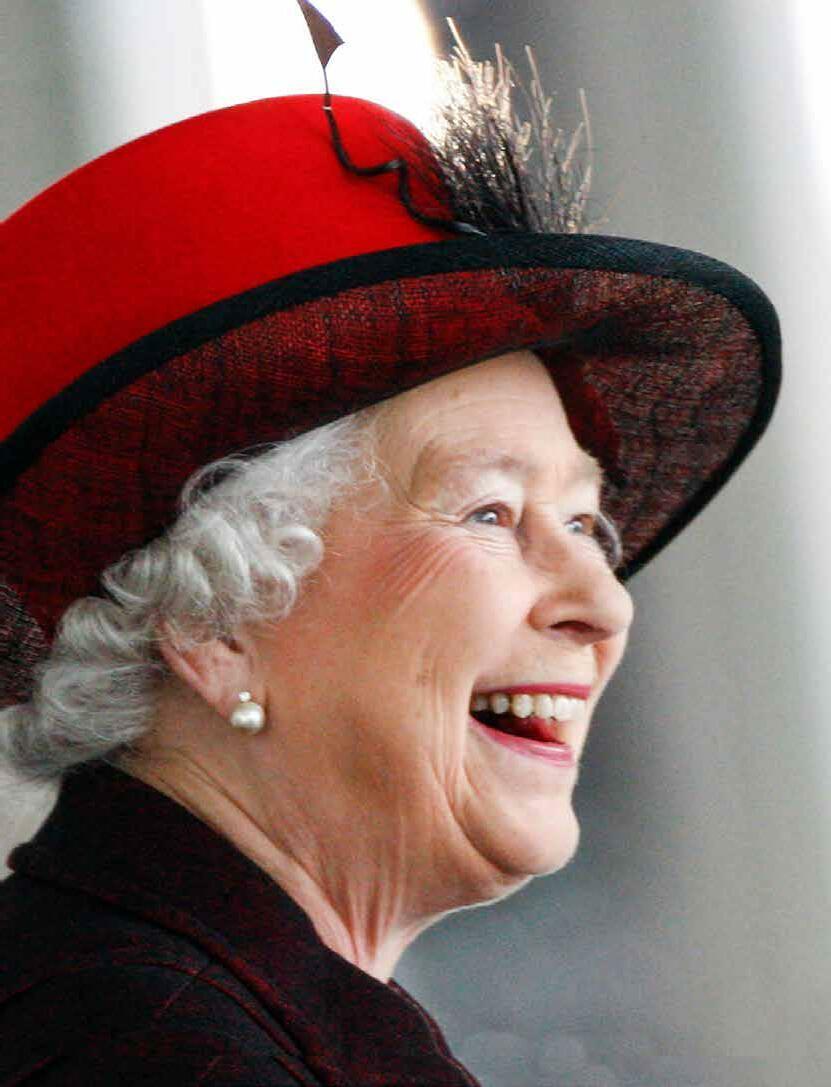
22 minute read
Special Feature
Queen Elizabeth II 1926 - 2022
AND A QUEEN IS BORN….
Advertisement
Elizabeth Alexandra Mary Windsor was never meant to be Queen, but even in the early days of her reign, it seemed she was fulfilling a destiny.
Arriving at 2.40 am on April 21, 1926, at 17 Bruton Street, Mayfair, she became the first sovereign to be born in a private home. As third in line to the throne, her caesarean birth was witnessed by the home secretary, as dictated by tradition – one that the Queen later ended. Crowds on the street for the general strike meant the new baby’s pram had to be ushered quietly out of a back door for her daily walks. Elizabeth was educated at home and her education included constitutional history and law in preparation for her assumption of the throne. The future queen was barely a teenager when World War II threatened her nation, but she was determined to do what she could for her country — and she soon became the first female member of the royal family to enlist in the British Army. When World War II broke out in 1939, Princess Elizabeth was just 13 years old. Throughout her teenage years, she contributed to the war effort in any way she could — and even enlisted in the British Army. Despite her perpetual prim and proper demeanour in her later life, there are many surprising stories about the future Queen Elizabeth II during World War II. Princess Elizabeth was the first woman in the British royal family to join the military. In her role as a mechanic, the future queen took apart engines, changed tires, and learned to drive trucks and ambulances. The press dubbed her “Princess Auto Mechanic,” and Elizabeth reportedly enjoyed getting her hands dirty and showing her hard work off to her family and friends. After the war, she could often be seen driving her cars around her estates. She was even known to diagnose and repair the engines in her own vehicles at times. Though she was royalty, there wasn’t always special treatment for Princess Elizabeth during World War II. She was determined to serve her country the same way others were required to. And when the Allies emerged victorious in the end, she slipped out of Buckingham Palace and partied in the streets of London — just like everyone else. The Queen not only served in the Armed Forces but was royal head of the British Army, Navy, and Air Force
Falling in love
The Queen and Prince Philip's story began when the pair met in 1939 and the Queen was just a teenager. During a visit to the Royal Naval College in Dartmouth, Philip was given the responsibility of entertaining 13-year-old 'Lilibet' as she was known, and her nine-year-old sister Margaret. Elizabeth wasn’t the only one taken with the handsome prince. King George VI reportedly felt Philip to be “the right man for the job” of the soon-to-be queen’s consort. The young lovers spent years keeping in touch by exchanging letters with each other during World War II. Their engagement was finally announced in July 1947, just after Elizabeth turned 21. Philip renounced his rights to the Greek and Danish thrones, and the couple was married in November 1947. Like other brides in the years after World War II,
Elizabeth had to use ration coupons to buy the materials for her wedding dress. The wedding itself was a grand affair, with 2,000 guests at Westminster Abbey, a reception at Buckingham Palace and a 9-foot-tall wedding cake. The royal newlyweds spent the first couple of years of their marriage in Malta, where Prince Philip was stationed with the Royal Navy. However, the relocation proved to be short-lived, with King George unexpectedly passing away in 1952 after several years of illness. This was just six years into their marriage, Elizabeth, then 27, became the Queen of England in 1953. With Prince Philip, the queen gave birth to four children, The queen’s oldest son is Charles, who was born in November 1948, before she’d ascended to the throne. Anne, Princess Royal, is the queen and Prince Philip’s second child, and she COMMUNITY Queen Elizabeth II 1926 - 2022 is their only daughter. She was given the Princess Royal title in 1987.
Prince Andrew was born in
February 1960. He was given the
Duke of York title in 1986 when he married Sarah Ferguson.
The youngest of Queen
Elizabeth and Prince Philip’s children, Prince Edward, was born in March 1964. He was given the Earl of Wessex title in 1999 when he married Sophie
Rhys-Jones.
The royal title
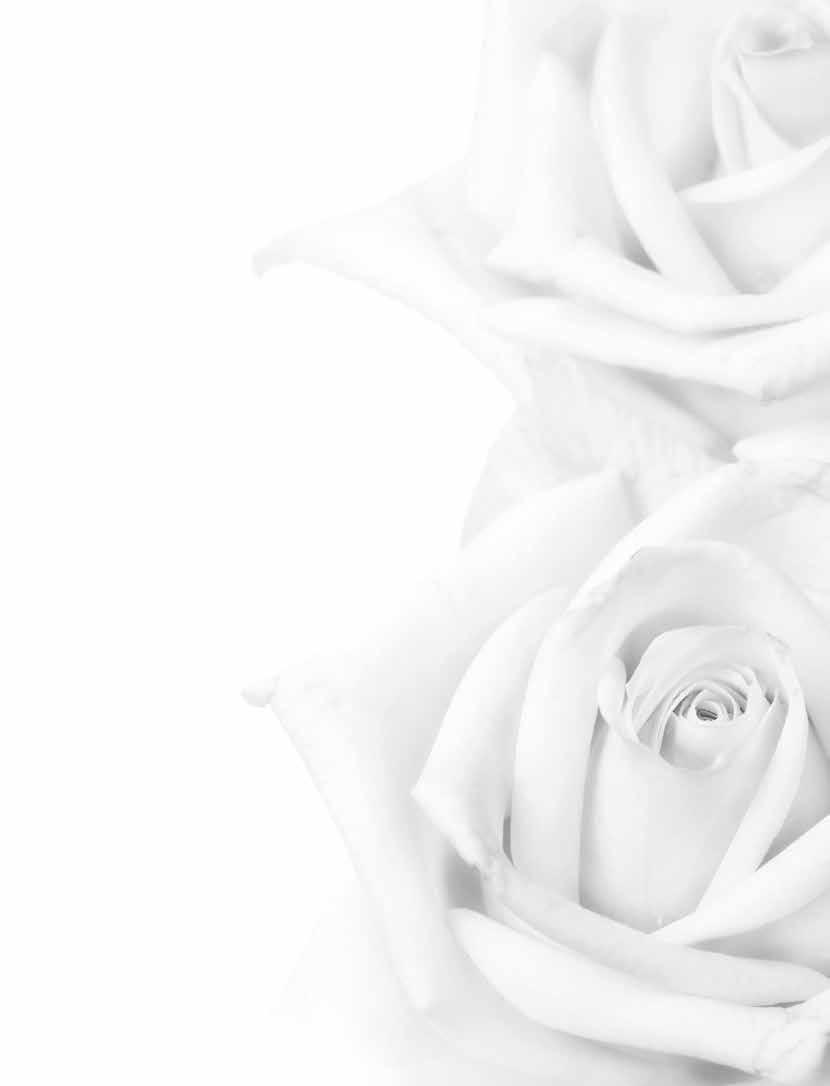
Her full title was, Her Majesty Elizabeth the Second, by the Grace of God, of the United Kingdom of Great Britain and Northern Ireland, and of Her Other Realms and Territories Queen, Head of the Commonwealth, Defender of the Faith. Queen of the Commonwealth After months of meticulous preparation, on 2 June 1953, Queen Elizabeth II was crowned at Westminster Abbey. Much of Britain shared the moment too as it was the first time a coronation was televised. The following year, The Queen and Prince Philip spent six months touring the world. She was the first reigning British monarch to visit Australia in what was the first of 16 visits to this country. And the message was all about helping others; the Queen was a patron for more than 600 charities, including military, medical and animal organisations. "I often draw strength from meeting ordinary people doing extraordinary things: volunteers, carers, community organisers and good neighbours; unsung heroes whose quiet dedication makes them special," she said in one Christmas Day address. During her reign, she awarded thousands of people with honours - from MBEs and knighthoods to the Victoria Cross. From the annual Trooping the Colour to Royal Ascot, people of all ages embraced the monarchy under Elizabeth's reign, but her popularity was tested in 1997. Family ties..........cont
Queen Elizabeth II 1926 - 2022
The death of Princess Diana in a car crash in Paris at the age of 36 saw a huge outpouring of grief from the British public. But the Queen was not seen publicly for five days. Following a public outcry, she made a national address in which she paid tribute to her daughter-inlaw. The British royal family continued to expand - and her brood of great-grandchildren grew with it. But the changing family dynamic ushered in an unexpected development. Prince Harry along with his wife Meghan Markle stepped back from senior duties and later went public with damaging accusations of racism within the royal family. The Queen was said to be deeply hurt, but Harry made it clear his relationship with his grandmother was strong. Throughout her life, the Queen’s dedication to her family – and the Commonwealth – was unwavering, even in the difficult early days of the COVID-19 pandemic. She was forced into isolation with her husband in Windsor Castle but remained in the public eye. A rare TV address - only the fifth of her reign - offered hope. "Together we are tackling this disease, and I want to reassure you that if we remain united and resolute, then we will overcome it, " she said. "I hope in the years to come everyone will be able to take pride in how they responded to this challenge. And those who come after us will say the Britons of this generation were as strong as any." A new chapter As Britain’s pandemic death toll soared, the monarch experienced a profound personal loss with her husband of 73 years dying two months before his 100th birthday in April 2021. COVID-19 restrictions meant Prince Philip's funeral was as he wanted it, without too much pomp or ceremony. Government regulations also saw The Queen sitting alone during the service, an image which resonated with the thousands of families who were forced to honour loved ones in a similar way. She soon returned to work, with video calls from Windsor Castle, and before long she was back meeting world leaders. After a short hospital stay, she addressed the COP26 climate summit virtually, reflecting on her own mortality. "Of course, the benefits of such actions will not be there to enjoy for all of us here today: none of us will live forever,” she said. "But we are doing this not for ourselves but for our children and our children's children, and those who will follow in their footsteps.” Her absence was felt a week later on one of the most important days on her calendar, with health reasons forcing her to cancel her appearance at Remembrance Sunday commemorations. In 2022, Queen Elizabeth celebrated her Platinum Jubilee - 70 years on the throne. She was the longest-reigning British monarch, surpassing the 63year reign of her great-greatgrandmother Queen Victoria. But in May she withdrew from the State Opening of Parliament and the reading of the Queen's speech because of "episodic mobility problems." It's the first time since 1963 she has not attended the event. The Queen handed her duties at the opening to Prince Charles and Prince William, with Charles reading her speech and Charles and William jointly opening parliament. Her health had been in decline, and she cancelled a virtual meeting with senior ministers after being advised to rest by her doctors. In a statement early Friday morning Australian time, Buckingham Palace confirmed: "The Queen died peacefully at Balmoral this afternoon". She was 96.

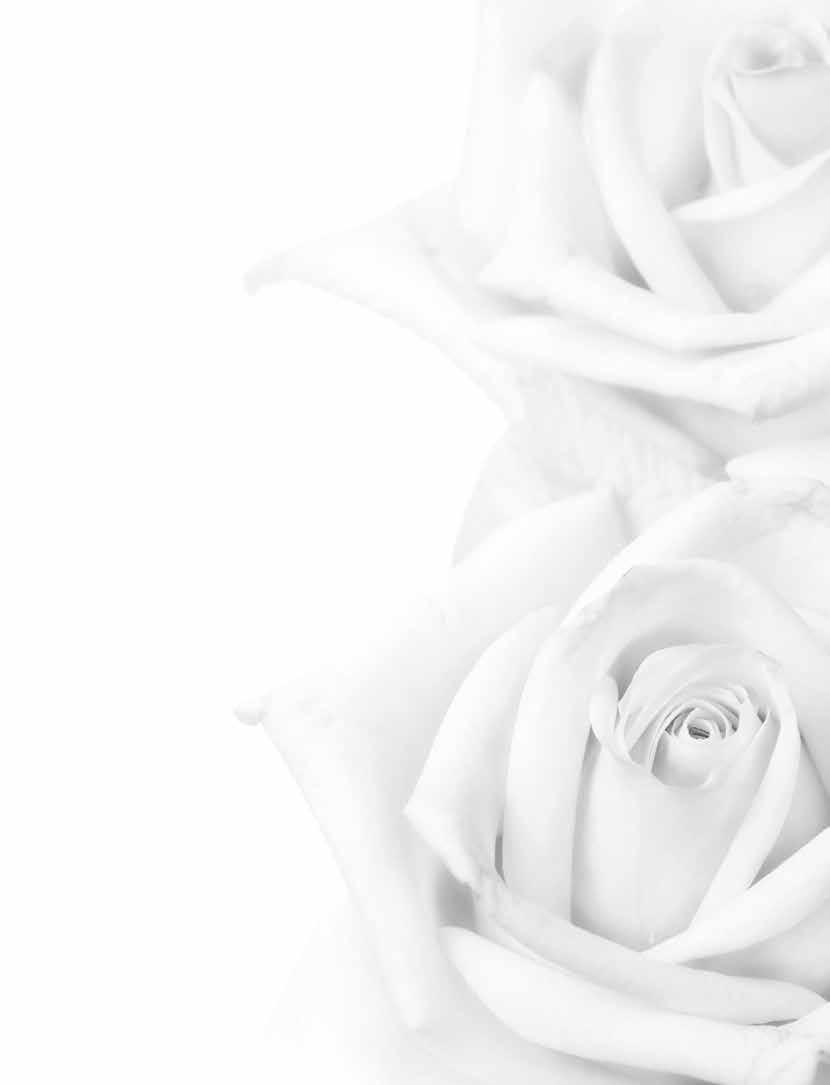
Australias Visit With The Queen
AS WE BOTH CELEBRATE THE LIFE, AND MOURN THE LOSS, OF QUEEN ELIZABETH II, LETS HAVE A LOOK AT HER TIME IN AUSTRALIA
Her visits to Australia – from her first in 1954 through to her last in 2011 – offer a snapshot of the changing relationship Australians have had with their sovereign and with the monarchy. The queen liked Australia and Australians. She came here 16 times throughout her reign and was, famously, on her way to our shores in 1953 when she learned her father had passed on and she was now queen. The eight-week tour saw her visit 57 towns and cities across Australia, with her official duties including meeting 70,000 exservicemen and women at the MCG and opening parliaments across the country. Among her more memorable moments were the grand opening of the Sydney Opera House in 1973, closing the Commonwealth Games in Brisbane in 1982, opening the Games in Melbourne in 2006 and her two trips to central Australia. But there were controversies too, including when then Prime Minister Paul Keating guiding the Queen with his hand during her 1992 visit, led to accusations he had breached royal protocol and a UK newspaper headline labelling him the ‘Lizard of Oz’. But asked later if he was insulted by the episode, the then Prince Charles said: "No. Nor was the Queen". The Queen's visits stalled during the late 1990s to avoid heated debate about the future of the monarchy. The most notorious incident came in 1975 when Prime Minister Gough Whitlam was dismissed from office by the Queen's representative. A long legal fight to make public 220 Palace letters between then Governor-General Sir John Kerr and the Queen's private secretary prevailed in 2020 - showing she was not aware of, nor sanctioned, his actions. Her next trip was timed well after the 1999 referendum on the republic, with its defeat partly attributed to the Queen's significance to so many Australians. The Queen's final visit came in 2011, when she was 85. She received praise from then prime minister Julia Gillard, Australia's first woman in the job and also a staunch republican. "In this, the home of Australian democracy, you are a vital constitutional part, not a guest, just as in this nation you can only ever be welcomed as a beloved and respected friend," Ms Gillard said. While 2011 was the Queen's last visit here, she welcomed a number of Australian prime ministers during visits to London, including Scott Morrison and Malcolm Turnbull. Mr Morrison created headlines during a visit in June 2021 when he told the Queen she had been "quite the hit" at the earlier G7 conference in Cornwall. Following her death, Australian Prime Minister Anthony Albanese said: "This time of mourning will pass but the deep respect and warm regard in which Australians always held Her Majesty will never fade" During Queen Elizabeth's reign there were 15 Australian governorsgeneral and 16 prime ministers.
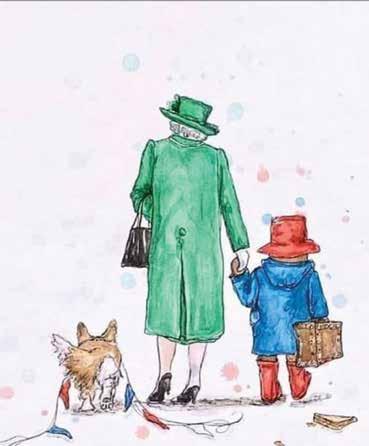
Paddington Bear And The Queen Earlier this year, the Queen’s HERE’S WHAT WE friendship with Paddington was KNOW ABOUT THEIR celebrated in an illustration by QUITE FRANKLY British artist Eleanor Tomlinson. The image, which is being shared ADORABLE HISTORY by fans on social media following TOGETHER: Her Majesty’s death, depicts The duo first ‘appeared’ together the pair walking hand-in-hand in a book in 1986 alongside one of the queen’s Paddington Bear, created by beloved corgis. British children’s book author Finally, they had tea and a very Michael Bond, first appeared in special sandwich – together for Bond’s 1958 book, A Bear Called the final time – in June Paddington. Then in 1986, Bond This was presented to the Queen wrote the book, Paddington at the for her approval, originally Palace in which Paddington Bear with an actress playing the visits Buckingham Palace, where Queens role. The Queen gave he crossed paths with the Queen. her permission, but only if she The pair don’t actually meet, could star along side Paddington though Paddington says he spotted herself. Obviously, the request Queen Elizabeth II in the window. was well received and of course, Paddington made a ‘real-life’ visit granted. to see the Queen in 2006 In the clip, the duo is sitting down He once again visited for some afternoon tea with the Buckingham Palace in 2006, this beloved animated bear. At one time in ‘real life’ for a pantomime point, Paddington accidentally play called The Queen’s Handbag. splattered some food on a butler’s It was held as part of the face, before revealing he had a Children’s Party at the Palace, marmalade sandwich stashed in honour of the Queen’s 80th away for safekeeping. birthday celebrations. The Queen then did one better, Paddington and the Queen were unclasping her handbag on seen again in a drawing created the table to reveal she had a by a British artist sandwich of her own. The first artist to perform on stage for the Jubilee concert was Queen, with Adam Lambert singing as lead in place of the late Freddie Mercury. As the music began, the Queen and Paddington tapped their cutlery in time with the music.
What a pair.
Writer of the sketch, Frank Cottrell-Boyce said, ‘when we asked the Queen to tea with Paddington, something magic happened – the most lovely goodbye’.
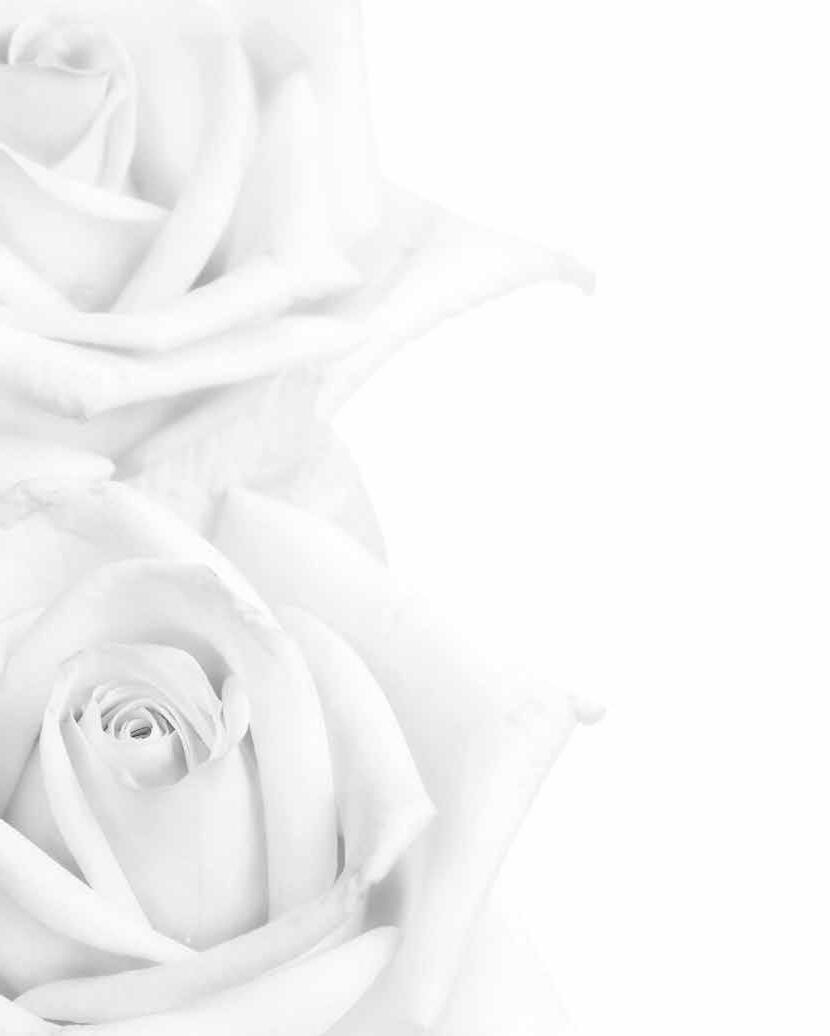
Wattle Painting by William Dargie Dargie’s wattle painting
In late 1954 William Dargie, a well-known and respected Australian artist, travelled to London to paint a portrait of Queen Elizabeth II. This portrait, which came to be known as the ‘wattle painting’, was commissioned to commemorate the visit. James Beveridge, owner of Melbourne-based printers McLaren and Co, commissioned the work because he wanted a portrait of the Queen ‘by an Australian artist for Australia’. Gifted to the Australian Commonwealth, it quickly became a popular and familiar image of the Queen. While Dargie was an accomplished and well-respected artist, he was still nervous about meeting, and painting, the Queen. Fortunately for Dargie, he was put at ease and described the Queen as behaving ‘as naturally as if I were a friend who had called in for afternoon tea’. The Queen had agreed to wear the wattle gown, created by Norman Hartnell, which she had worn during her tour in Australia. To safeguard the painting, Dargie made a copy after turning the original work upside down so it would appear to him as a series of colours and forms. This is a well-known technique and reduces the temptation to try to improve on the original. Both paintings were sent back to Australia on separate aircraft. The original arrived safely in January 1955 and was presented to the Australian Government. As the copy was no longer required, Dargie gave the reproduction to his hostess in London, Lady Hamilton Fairley, later that year. It remained in her family’s possession until 2009 when it was purchased by the National Museum of Australia.

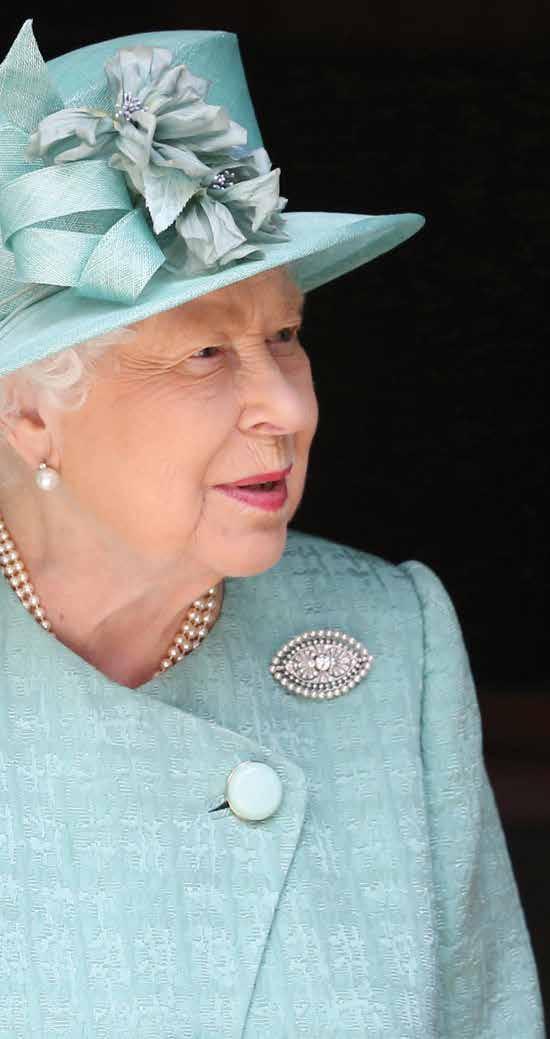
INTERESTING FACTS ABOUT THE QUEEN
you may not know.
HER HANDBAG MUST-HAVES
What does the woman who has everything carry in her famous Launer handbag? The same as most of us (except for the essentials, such as keys, credit cards and her phone): the Queen never left home without a mirror, lipstick, pen, mint lozenges and reading glasses. On Sundays, she added crisply ironed banknotes to the bag to hand out at church. Her Majesty uses her purse as a way to signal her staff. Apparently, if she places her bag on the table, it means that she wants to leave within five minutes. And, if she puts her bag on the floor, it shows she’s not enjoying the conversation and wants to be rescued.
ON THE PROPERTY LADDER
She became the Britain’s youngest homeowner at the age of just six – when the people of Wales gifted her a house (a Wendy house) in the grounds of Windsor’s Royal Lodge. It was called Y Bwthyn Bach, which means ‘The Little Cottage.’ After the war, she partied incognito on the streets of London When the second world war ended, on 8 May 1945, London’s streets were lined with people, all ecstatic at the news that the war was finally won. Wishing to celebrate alongside other Londoners, with her parents’ permission, Princess Elizabeth went out incognito and joined the party on the city’s streets. At the time she noted the experience in her diary, writing: “Trafalgar Square, Piccadilly, Pall Mall, walked simply miles. Saw parents on balcony at 12.30am – ate, partied, bed 3am!”
SHE WAS A DAY DRINKER
A regular tippler, her majesty liked a gin with plenty of ice and a slice of fresh lemon before lunch, then “she will take wine with lunch and a dry martini and a glass of champagne in the evening”, her cousin, Margaret Rhodes, said. The Queen made no secret of enjoying life: “For me, heaven is likely to be a bit of a comedown.”
SHE HAD NO PASSPORT OR DRIVER’S LICENCE
Accomplished behind the wheel of her Jags and Range Rovers since joining the British women’s army as a truck driver and mechanic in 1945, the Queen was the only person in Britain who could drive without a licence or registration plates on her car. And because she issued British passports, QE2 didn’t need one, and instead confirmed her identity through basic questions such as her date of birth and address. When given exotic animals, she rehoused them During her reign, the Queen was given animals including an elephant, a jaguar, two tortoises and a pair of beavers. She donated them to the London Zoo, where she opened a Land of the Lions exhibit with Prince Philip in 2016.
SHE SPOKE FLUENT FRENCH
language, history and music, the Queen learnt French as a girl from French and Belgian governesses. The monarch delivered an address at a 2014 state banquet en Francais and often used it “when speaking to ambassadors and heads of state from French-speaking countries, and when visiting French-speaking areas of Canada”, according to the official royal website.
SHE DEMOTED A FOOTMAN OVER A PRANK
When a footman spiked her corgis’ water with whisky in 1999 to amuse other palace staff, the Queen demoted him, according to reports. A “fantastic” dog trainer, according to royal corgi trainer Dr Roger Mugford, the monarch had 30 corgis after being given her first, Susan, on her 18th birthday. She also became an accidental owner of dorgis – a corgi-daschund mix – after one of her dogs mated with Princess Margaret’s dachshund, Pippin. The Queen technically owned the UK’s swans and dolphins In the 12th century, the Crown claimed ownership of all unmarked swans “swimming in open waters” in the UK because the birds were highly valued as a delicacy at banquets and feasts. The Queen – who also owned all the whales and dolphins (“fishes royal”) in the seas around the UK – didn’t go around claiming swans but celebrated an annual swan upping, where her official swan marker counted the swans in part of the River Thames. And she loved racing pigeons Racing pigeons has been a hobby of the royal family since 1886, according to the Royal Pigeon Racing Association. The Queen owned about 200 racing pigeons and was a patron of several societies.
PUTTING HER STAMP ON THINGS
The Queen took such delight in her stamp collection – worth more than $3.5 million, it was built on the collection of her father and previous monarchs and filled about 300 albums – that she would take it out and show it to visiting heads of state. Elizabeth was an Arsenal fan, as revealed by former star Cesc Fabregas, who met the monarch when she invited the team for afternoon tea at the palace in 2006. The late Queen Mother was also a Gunners fan, as is Prince Harry.
SWEET TOOTH
A rich mint and chocolate ice cream bomb known as a bombe glacée royale was the Queen’s favourite dessert, according to her former chef Darren McGrady. She had a chocolate birthday cake every year, and every day, a whole cake was sent up to her for tea. She sometimes took a slice, then the cake went to staff for their afternoon tea.
A HEALTHY TREAT
She always carried a bag of carrots as a reward for her horses.
THE QUEEN’S FAVOURITE SONGS
A top-10 list in honour of her majesty’s 90th birthday in 2016 revealed she loved show tunes such as Howard Keel’s Oklahoma and Dolores Gray and Bill Johnson’s Anything You Can Do from Annie Get Your Gun.
HER STEAK ORDER
Not a fan of starchy foods, including potatoes and pasta, the Queen had a favourite dish called Gaelic steak, made from venison, mushrooms, flambeed Irish whiskey and cream. She had hers well done with a good sear.
THE HOTEL SHE HUNG OUT AT MOST
While the Queen very rarely dined out, she had a soft spot for Claridge’s Hotel. After the 1981 wedding of Prince Charles and Lady Diana Spencer, she hosted a gala dance at the hotel, where a simple supper of sausages, baked beans and scrambled eggs with smoked salmon was served. “Lilibet does things so well,” guest Nicky Haslam heard another say.
HER HACK FOR BREAKING IN SHOES
Being the same size as the Queen, her dresser and close friend, Angela Kelly, was roped in to break in the Queen’s handmade shoes from Anello & Davide. Their bespoke styles were a royal favourite for more than 50 years.
TRUSTY JET LAG REMEDY
The most travelled monarch in UK history, the Queen relied on barley sugar sweets to help her blood sugar match the eating schedule of the destination.
HER LUGGAGE
For her 1947 honeymoon, the Queen bought a set of GlobeTrotter suitcases and never used anything other than those original bags, according to the company’s site. Her luggage tag was yellow with “The Queen” written on it. Each royal family member reportedly gets their own colour: the Duchess of Cambridge also has yellow, Prince William and Prince Charles use red, and Princess Anne goes green.
HER TRAVEL MUST-HAVES
When on tour, the Queen took her own toilet paper (sealed with stickers only she and Prince Philip were allowed to break), a personal supply of blood that matched her blood type and a defibrillator. Someone called the cops on her In 2017, an anonymous driver dobbed in the Queen for not wearing a seatbelt while travelling to Westminster with Prince Charles, according to the BBC. Under UK law, the Queen could not be subjected to civil or criminal proceedings. The West Yorkshire Police Contact Centre tweeted about the incident the next morning: “Let’s hope the Queen is behaving today.”
WEDDING-DAY DRAMA
On the day of the Queen’s wedding (she bought the material for her Norman Hartnell dress using World War II rationing coupons), a hairdresser was securing her veil with her chosen tiara when its metal frame snapped. The court jeweller was summoned to repair it after the Queen Mother told her daughter to stay calm: “We have two hours and there are other tiaras.”
UNUSUAL ALARM CLOCK
Crowned wearing Clarins make-up after commissioning the brand to create a lipstick that went with her coronation robes, the Queen used Clarins for the rest of her life. She was also a fan of Elizabeth Arden’s lipstick and Eight Hour Cream, and exclusively wore Essie’s pale pink Ballet Slippers nail polish after discovering it in 1989.
GRANDMA TO THE RESCUE
As the royals waved Prince Andrew and Sarah Ferguson off from their 1986 wedding, little Prince William darted after the newlyweds’ carriage. His grandmother broke into a run to chase a sailor-suited William and grab his hand before returning him to safety.
SHE ONLY RARELY HAD HOSPITAL STAYS
The Queen’s overnight stay at King Edward VII hospital for “preliminary investigations” in October last year was just the fourth of her reign. In 2018, she had cataract surgery. In 2003, she had knee surgery and two lesions removed from her face, and in 1982 she had a wisdom tooth removed. Her four children were home births, including the caesarean section delivery of Prince Charles in 1948, when the Buhl Room at Buckingham Palace was converted into an operating suite after the Queen laboured for 30 hours.
SHE DISTRACTED AN INTRUDER WITH A CIGGIE
When Michael Fagan broke into Buckingham Palace and confronted the Queen in bed in 1982, she ran from the room (wearing a Liberty print night dress) and sought help from a maid, Fagan said in a 2012 interview. While waiting for police to arrive, the pair ushered the uninvited guest into a nearby pantry and offered him a cigarette, according to Scotland Yard’s official report







